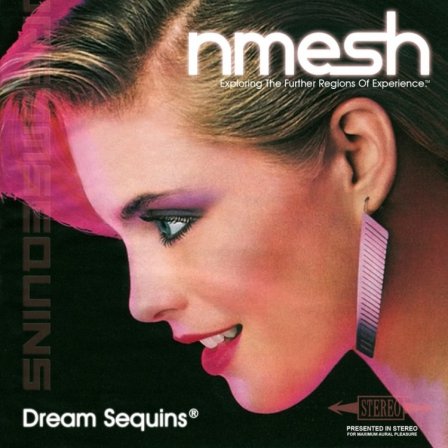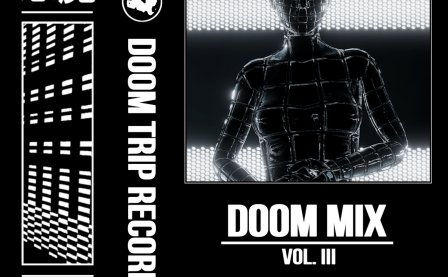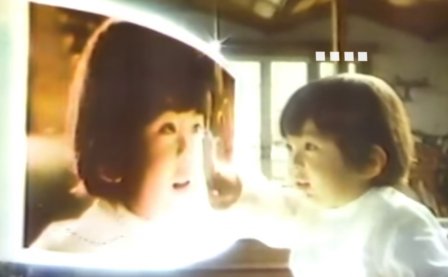“I understand the music, I understand the movies, I even see how comic books can tell us things. But there are full professors in this place who read nothing but cereal boxes.”1
Culture and everything it entails — media, spoken, visual, and written language — is the extra sense. It acts as an extra-auxiliary facet of our understanding. When confronted with language sans “verba” — not the language of words, but the language of our constructions — we enter the realm that is our understanding through both abstraction and metaphor. These abstractions and metaphors rely on our previous constructions, the activate signs and signals that cull thoughts to process in certain directions (also based on our combined experience with these sensory phenomena). The sound of a Mario coin, the death of Ryu, the pre-determined New Age weightlessness of synths, the effect of sonic space given within a psychedelic landscape — all of it provokes the process of our brains that activate both reward and disdain.
We often associate the extra sensory with the denial of senses: acid, or the modern “safe” version of sensory deprivation — the float tank. We wrap ourselves back into our minds to study the process of mental synesthesia, but in the end, we often come out with nothing but the idea of what it might feel like to be a hot dog. Then we end up with the understanding of meta-text, the brain referencing its own experiences, altering its own subjectivity. We begin to realize how entranced the signals of our nostalgia were with late capitalism. Video games, daytime television, commercials — all there to package our own experiences back to us so that we might purchase them, under the guise that we were making our own decisions.
So, when you realize that your memories were bought and sold to you, what better reaction is there than to steal them back by texturizing them, slowing them down by 800%, altering their meanings, redefining or reassigning their contexts, androgynizing their sex, or reaffirming their attachment to our senses?
“I don’t trust anybody’s nostalgia but my own. Nostalgia is the product of dissatisfaction and rage. It’s a settling of grievances between the present and the past.”
A common enigma and criticism of meta-commentary is the often derided image of the snake eating its own tail, that the culture at hand is so wrapped up in itself that there seems no escape, that its self-awareness will lead to its undoing. This, for all intents and purposes, is a cliché: what was once our economy of dealing with the language of meta-text is now our misunderstanding. A better view would be seeing the snake as tasting its own tail: understanding by way of a sense itself. Much like Narcissus seeing himself at the edge of the water2, one must taste themselves, destroy their being in the process, and perform the metamorphosis into the eternal symbolic. Reanalyzing this image, I believe this notion is better at explaining the achievement of the hyper-meta, an act that is now seeing its continuing presence in the capitalist world (Doritos and Oreos).
“Technology is lust removed from nature.”
This might be one of the most excellent aspects of Nmesh (as well as supporting the idea that creative works often beat critics to the critical and theoretical punch), best exemplified in the closing track of Dream Sequins®, “The Unconscious Connection.” The track features the ultra-hyper-meta action of appropriating Anthony Fantano’s video review of Macintosh Plus’ Floral Shoppe, ending with a sample from Wayne’s World, in which Garth passively/Freudianly admits to being turned on by Bugs Bunny dressed as a woman. It’s an excellent moment where everything is subject to subversion, Fantano’s sort of gesturing of himself through trying to understand vaporwave becoming critical fodder (the semi-drug-insinuating repetition of a high-pitched voice saying, “Hello, my needle-droppers/ Hello, my needle-droppers/ Hello, my needle-droppers”). The track is part joke, part psychedelic experience, part nightmare scenario.
Building on from last year’s Nu.wav Hallucinations, Nmesh continues here with various de- and recontexualizations, turning Mariah Carey songs into spaces where identity becomes lost, supplying a heavy dose of vagueness to the course of sounds and music programmed in emotional manipulation. Whereas some of vaporwave’s recontextualizations almost feel like curation, Nmesh veers toward the compositional. This allows for a space where not only corporate music is subverted, but also all of the music of desire and emotional manipulation, sounds we understand as representatives of and stand-ins for our feelings (which are not our own), the soundtracks of our past lives turned into dreams and nightmares beyond our control, our lust unmanageable and constant. Nmesh has really run with the fascination of vaporwave and vapor techniques, warping not just the music of corporate language, but also the signs and signifiers of corporate language, feeling, nostalgia, and desire encoded into our culture by late capitalism. As a result, Dream Sequins® is void of brevity and relentless in its appropriations, pushing the techniques presented on Nu.wav Hallucinations to jarring proportions. Public radio, PSAs, health advisories, relaxation tapes, things that border corporate identity, sounds trying to disguise themselves as authentic — all of it pulled out in the construction of this dream.
“There is light, there is sound. I ask my students, ‘What more do you want?’ Look at the wealth of data concealed in the grid, in the bright packaging, the jingles, the slice-of-life commercials, the products hurtling out of darkness, the coded messages and endless repetitions, like chants, like mantras, ‘Coke is it, Coke is it, Coke is it.’ The Medium practically overflows with sacred formulas if we can remember how to respond innocently and get past our irritation, weariness and disgust.”
1. All quotes Murray Jay Siskind, from Don DeLillo’s White Noise.
2. As in, himself as a vision that he had not previously known, a version much different from our modern misreading; that is that Narcissus was unaware of himself. He did not fall in love with himself directly, but rather with the highest beauty of which he had been granted by the gods. Once he is made aware of the attachment of the reflection to the actual physical identity, his ego, this is the moment in which he both kills himself and performs the metamorphosis into his permanent, symbolic being.
More about: NMESH




